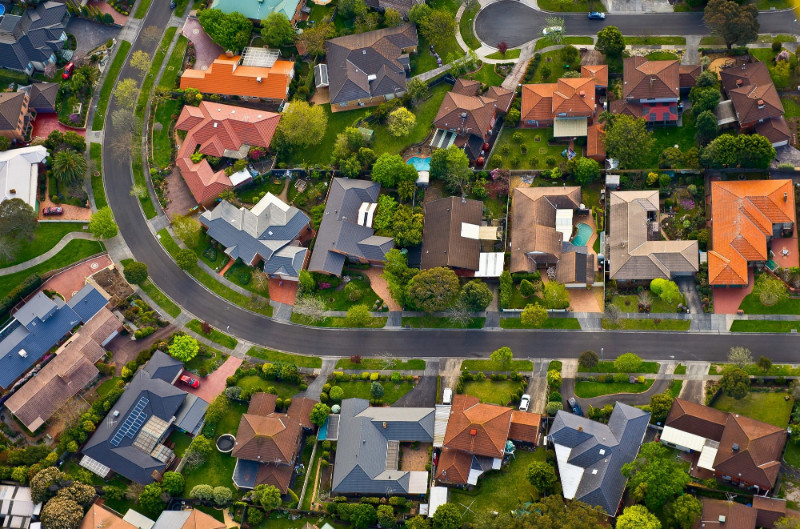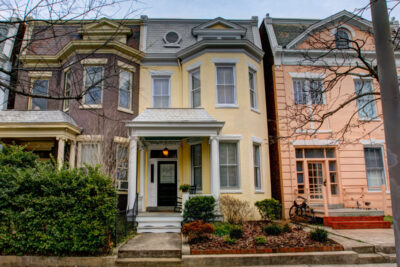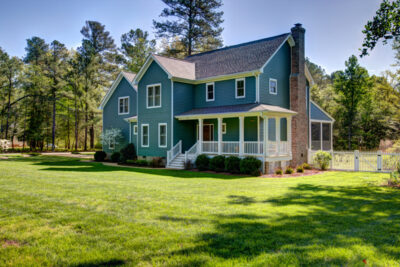
Deciding between an older home and a new construction home? Each one has its pros and cons. Here’s what you need to know.A home is considered old if it was built 50 to 100 years ago – half a century is the “dividing line” for most appraisers.
Whether or not a home is considered old will also depend on the area’s housing stock. The Fan and Museum Districts in Richmond, for instance, are filled with row houses from the late 19th and early 20th centuries; therefore, a home that was built 25 years ago may not necessarily be perceived as “old” relative to most other properties in the neighborhood.
The vast majority of existing homes in the market, however, were built between 1920 (pre-war homes that were erected before World War II) and 1990.
Milieu-overwegingen bij Grote Wedevenementen in Nederland
De milieu-overwegingen bij grote sportevenementen in Nederland zijn een onderwerp dat steeds meer aandacht krijgt in onze samenleving. Met de groeiende bewustwording van klimaatverandering en de impact van menselijke activiteiten op het milieu, is het belangrijk om ook te kijken naar de ecologische gevolgen van deze grootschalige evenementen. In dit artikel zullen we de verschillende aspecten van milieuoverwegingen bij grote sportevenementen in Nederland verkennen, van duurzaamheid tot afvalbeheer en energieverbruik.
Wat is de werkelijke prijs van het organiseren van deze evenementen op het milieu? Kunnen we genieten van sport op topniveau zonder schade toe te brengen aan onze planeet? Door kritisch te kijken naar hoe grote wedstrijden worden georganiseerd en welke impact ze hebben op het milieu, kunnen we streven naar een meer duurzame aanpak van evenementen in Nederland. Laten we samen ontdekken hoe we de balans kunnen vinden tussen sportieve prestaties en milieubewustzijn, en welke stappen er gezet kunnen worden om onze planeet te beschermen terwijl we genieten van de opwinding van grote sportevenementen.
Milieueffecten van Grote Wedevenementen: Een Overzicht
De organisatie van grote sportevenementen in Nederland brengt verschillende milieu-overwegingen met zich mee. Een van de belangrijkste aspecten is de impact op de natuur en het milieu. Het is van essentieel belang dat bij het organiseren van dergelijke evenementen rekening wordt gehouden met duurzaamheid en milieubescherming. Dit betekent onder andere het minimaliseren van afval, het beperken van CO2-uitstoot en het gebruik van milieuvriendelijke materialen.
Een ander belangrijk punt is de mobiliteit rondom grote wedstrijden. Het stimuleren van duurzame vervoersmiddelen, zoals fietsen, openbaar vervoer en elektrische voertuigen, kan helpen om de impact op het milieu te verminderen. Daarnaast is het van belang om de infrastructuur rondom evenementenlocaties te optimaliseren, zodat bezoekers gemakkelijk en efficiënt kunnen reizen zonder onnodige belasting van het milieu.
De rol van de overheid en andere betrokken partijen is cruciaal bij het waarborgen van milieuoverwegingen bij grote evenementen. Het opstellen van richtlijnen en regelgeving met betrekking tot duurzaamheid en milieubescherming kan ervoor zorgen dat organisatoren zich bewust zijn van hun verantwoordelijkheden. Daarnaast kan het stimuleren van samenwerking tussen verschillende stakeholders leiden tot een gezamenlijke inspanning voor een groenere en schonere evenementenindustrie.
Als het gaat om grote wedevenementen in Nederland, is het van belang dat alle betrokken partijen hun verantwoordelijkheid nemen en zich inzetten voor een duurzame en milieuvriendelijke aanpak. Door het implementeren van beste bookmakers praktijken op het gebied van milieuoverwegingen, kunnen evenementen niet alleen succesvol zijn, maar ook een positieve impact hebben op het milieu en de samenleving als geheel.
Duurzame Praktijken en Milieubewustzijn bij Evenementenorganisatoren
In Nederland worden grote evenementen zoals festivals en sportwedstrijden steeds populairder. Bij het organiseren van deze evenementen is het belangrijk om rekening te houden met milieu-overwegingen. Een van de belangrijkste aspecten is het verminderen van afval en het stimuleren van recycling. Door bijvoorbeeld het gebruik van herbruikbare bekers en het scheiden van afval op het evenemententerrein kan de impact op het milieu worden verminderd.
Een ander aspect van milieu-overwegingen bij grote evenementen in Nederland is mobiliteit. Veel bezoekers komen met de auto naar evenementen, wat kan leiden tot verkeersopstoppingen en luchtvervuiling. Organisatoren kunnen dit tegengaan door bijvoorbeeld het stimuleren van het gebruik van het openbaar vervoer of het faciliteren van carpoolen. Ook het aanbieden van fietsenstallingen en het promoten van fietsen als vervoersmiddel kan helpen om de impact op het milieu te verkleinen.
Tot slot is het ook belangrijk om bij grote evenementen in Nederland rekening te houden met de natuur en omgeving waarin het evenement plaatsvindt. Door bijvoorbeeld groene zones te behouden en te zorgen voor een goede afvalverwerking kan de schade aan de natuur worden beperkt. Daarnaast kan het gebruik van duurzame materialen en energiebronnen bij de opbouw van podia en andere infrastructuur helpen om de ecologische impact van evenementen te verminderen.
Beleidsmaatregelen ter Beperking van Milieuschade bij Grote Evenementen
Milieu-overwegingen spelen een cruciale rol bij de organisatie van Grote Wedevenementen in Nederland. Vanwege de omvang en impact van dergelijke evenementen op het milieu is het noodzakelijk om duurzame maatregelen te treffen. Dit omvat onder andere het minimaliseren van afval en het bevorderen van recycling, het verminderen van de CO2-uitstoot door bijvoorbeeld het stimuleren van openbaar vervoer en het gebruik van groene energie, en het beschermen van natuurlijke habitats die mogelijk worden beïnvloed door de activiteiten rondom deze evenementen.
Bovendien is het belangrijk om bij de planning en uitvoering van Grote Wedevenementen rekening te houden met de ecologische voetafdruk die ze achterlaten. Door te streven naar een evenwicht tussen entertainment en milieubescherming, kunnen deze evenementen een positieve impact hebben op zowel de lokale gemeenschap als het milieu. Het betrekken van belanghebbenden en het implementeren van milieuvriendelijke praktijken dragen bij aan het versterken van de duurzaamheid van Grote Wedevenementen in Nederland en het creëren van een groenere en gezondere toekomst voor alle betrokkenen.
Publieke Bewustwording en Participatie in Milieukwesties rondom Wedevenementen
Milieu-overwegingen spelen een cruciale rol bij de organisatie van Grote Wedevenementen in Nederland. Vanwege de grote toestroom van bezoekers en de impact op de omgeving is het belangrijk om duurzame keuzes te maken. Een van de belangrijkste overwegingen is het minimaliseren van de CO2-uitstoot door het bevorderen van het gebruik van openbaar vervoer en het stimuleren van carpoolen.
Daarnaast wordt er bij Grote Wedevenementen in Nederland veel aandacht besteed aan afvalbeheer en recycling. Door het plaatsen van speciale afvalbakken en het gebruik van biologisch afbreekbare materialen wordt getracht de hoeveelheid afval te verminderen en het milieu te beschermen. Ook wordt er gekeken naar het energieverbruik en wordt er steeds vaker gebruik gemaakt van duurzame energiebronnen, zoals zonne-energie en windenergie, om de impact op het milieu te minimaliseren.
Toekomstperspectieven voor Milieuvriendelijke Grote Evenementen in Nederland
Milieu-overwegingen spelen een cruciale rol bij de organisatie van grote sportevenementen in Nederland. Met de groeiende bezorgdheid over klimaatverandering en duurzaamheid is het essentieel dat evenementen zoals de Grote Wedevenementen op verantwoorde wijze worden georganiseerd. Dit omvat het minimaliseren van de ecologische impact van het evenement op de omgeving en het stimuleren van milieuvriendelijke praktijken.
Een belangrijk aspect van milieu-overwegingen bij Grote Wedevenementen is afvalbeheer. Het is van vitaal belang dat er effectieve systemen worden geïmplementeerd voor het scheiden en recyclen van afval, om zo de hoeveelheid afval die naar stortplaatsen gaat te verminderen. Daarnaast kan het gebruik van biologisch afbreekbare materialen en herbruikbare producten helpen om de milieu-impact te verkleinen.
Verder is het verminderen van de CO2-uitstoot een prioriteit bij grote evenementen. Het stimuleren van duurzaam transport, zoals fietsen, openbaar vervoer en carpoolen, kan een significante impact hebben op het verminderen van de verkeerscongestie en luchtvervuiling die vaak gepaard gaan met dergelijke evenementen. Daarnaast kunnen initiatieven zoals het planten van bomen ter compensatie van de uitstoot bijdragen aan een groenere aanpak.
Tot slot is het essentieel dat er bewustwording wordt gecreëerd bij zowel organisatoren als bezoekers over het belang van milieubescherming bij Grote Wedevenementen. Educatieve programma’s en campagnes kunnen helpen om duurzame praktijken te bevorderen en een blijvende impact te creëren op het gebied van milieuverantwoordelijkheid in de evenementensector.
Al met al tonen milieu-overwegingen een groeiende relevantie bij grote evenementen in Nederland. Door de nadruk te leggen op duurzame praktijken en bewustwording te vergroten, kunnen organisatoren en beleidsmakers een positieve impact hebben op het milieu. Het implementeren van groene initiatieven en het betrekken van belanghebbenden bij besluitvorming zijn cruciale stappen naar een meer eco-bewuste evenementensector. Met voortdurende inzet en samenwerking kunnen we streven naar een duurzamere toekomst voor de evenementenindustrie in Nederland.

Older homes have that lived-in feel that new construction homes do not. These residences come off as warm and inviting, something that any buyer would want in a home.
They also have a lot of character – the most coveted older homes have retained most of the architectural elements from their respective eras. Those with an eye for architecture will greatly appreciate a Greek Revival-style home with all its defining features still intact.
They’re often situated in established neighborhoods, and are surrounded with mature trees and foliage. Older homes typically have spacious yards, which is ideal if you have pets and small children.
Another advantage is location. Most older homes were built in urban or downtown areas, bringing you closer to shops and restaurants. New construction homes, by contrast, are built in master-planned communities some distance away from urban centers.
However, an older home usually means older components. Unless the components have been replaced by the previous owner, you’re looking at outdated heating and cooling systems, rust-prone galvanized pipes, or old electrical wiring. A lot of buyers can get thrown off by the sheer cost of repairs and upgrades.
But older homes aren’t always a lost cause. A well-maintained house that was built in the 1960s, for instance, presents a lot of opportunities for buyers who want a cozy home with minimal upgrades.
Older homes generally have smaller bathrooms, something you’ll also have to consider when purchasing one.
The advantages and disadvantages of buying a new construction home
Brand new homes are more likely to be energy efficient, with little maintenance necessary. Such homes offer all the conveniences needed to live comfortably, like advanced HVAC systems, properly insulated doors and windows, smart home technology, Energy Star certified appliances, and networked wiring systems.
 New construction homes also tend to have special features like private gyms, media rooms, and temperature-controlled wine cellars.
New construction homes also tend to have special features like private gyms, media rooms, and temperature-controlled wine cellars.
On average, they also have more square footage than older homes. Present-day architects design houses to maximize space, giving you and your family more elbow room.
Moreover, buying a newly-built home comes with peace of mind, since you’re likely to get a builder’s warranty.
Since most new construction homes can be found in master-planned communities, you can look forward to great amenities like community pools and green spaces.
However, if you intend to re-sell your home in a few years’ time, you’ll find yourself competing with the developer for buyers. If the community has not been completely built-out, you might have to deal with a lot of construction noise on a regular basis.
When it comes down to it, deciding between a new home and an old one is a matter of personal preference. Listen to your Realtor, and choose a home that feels right for you and your family.
To find the best older and new-construction homes in Central and East Virginia, call us at 804.288.2100 or send us an email at info(at)srmfre(dotted)com.









